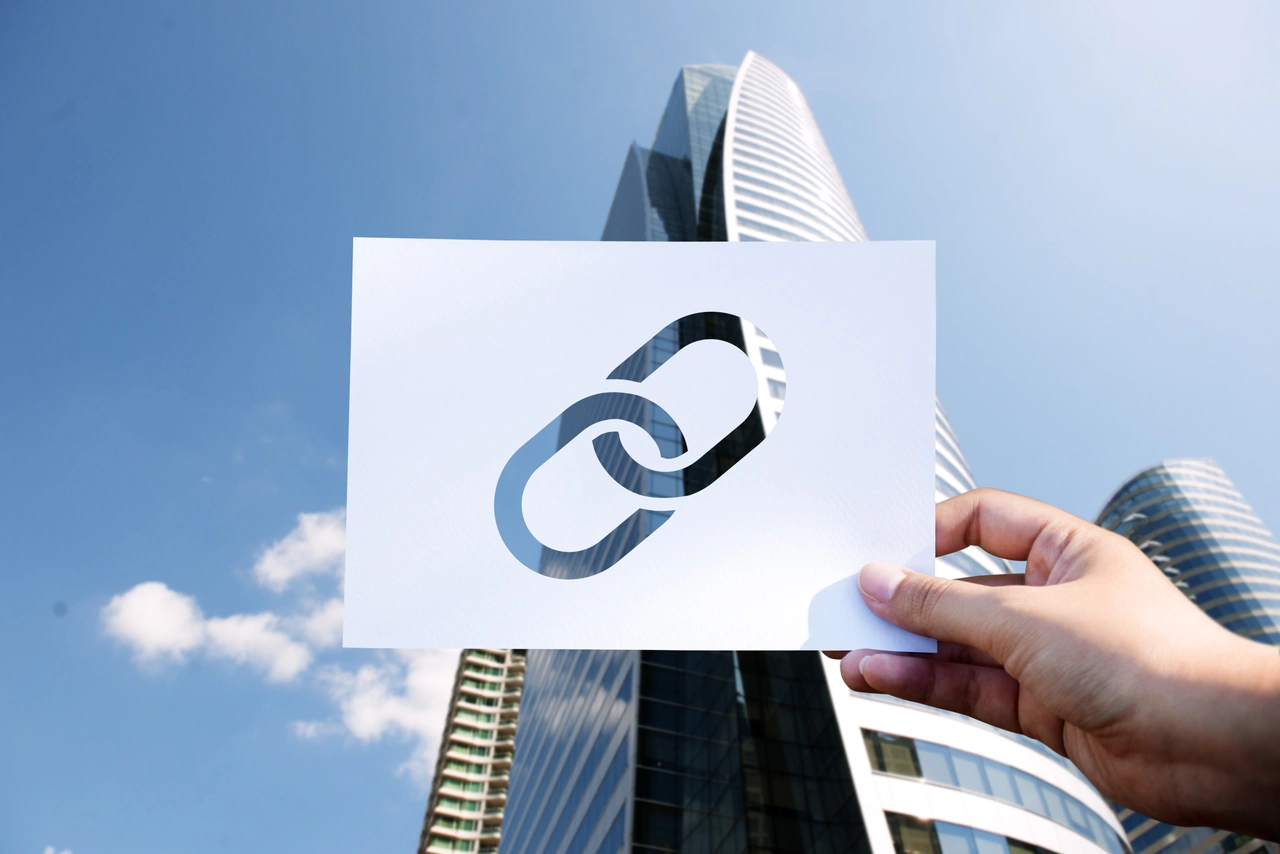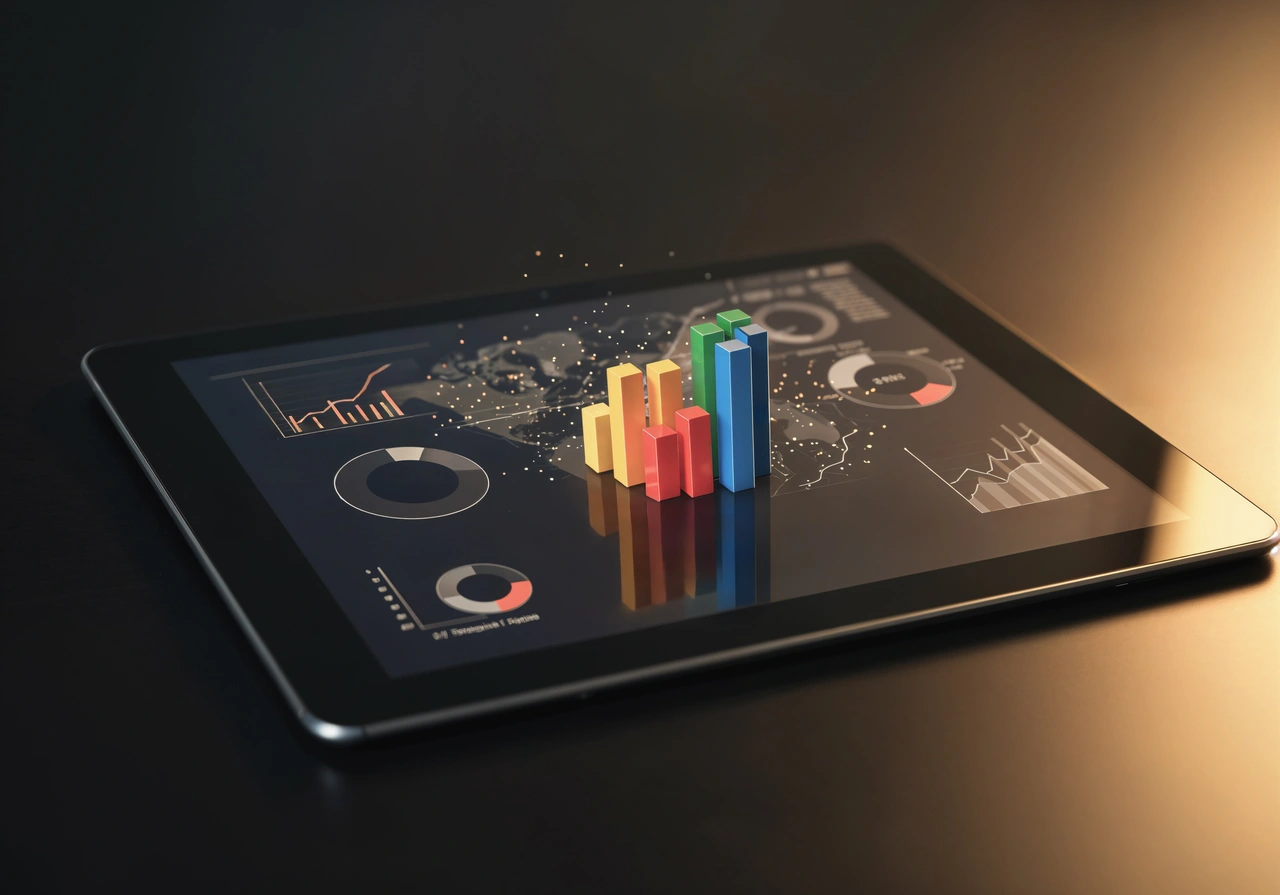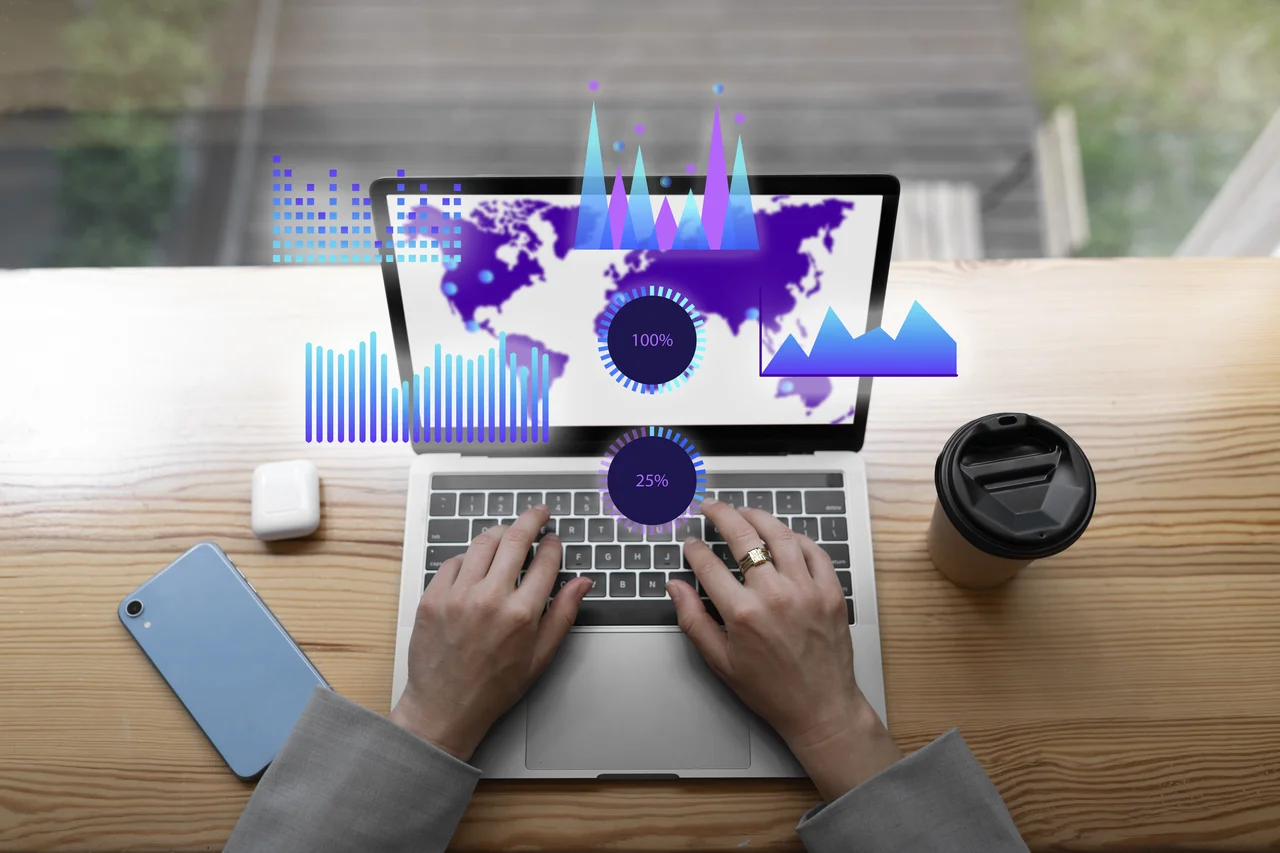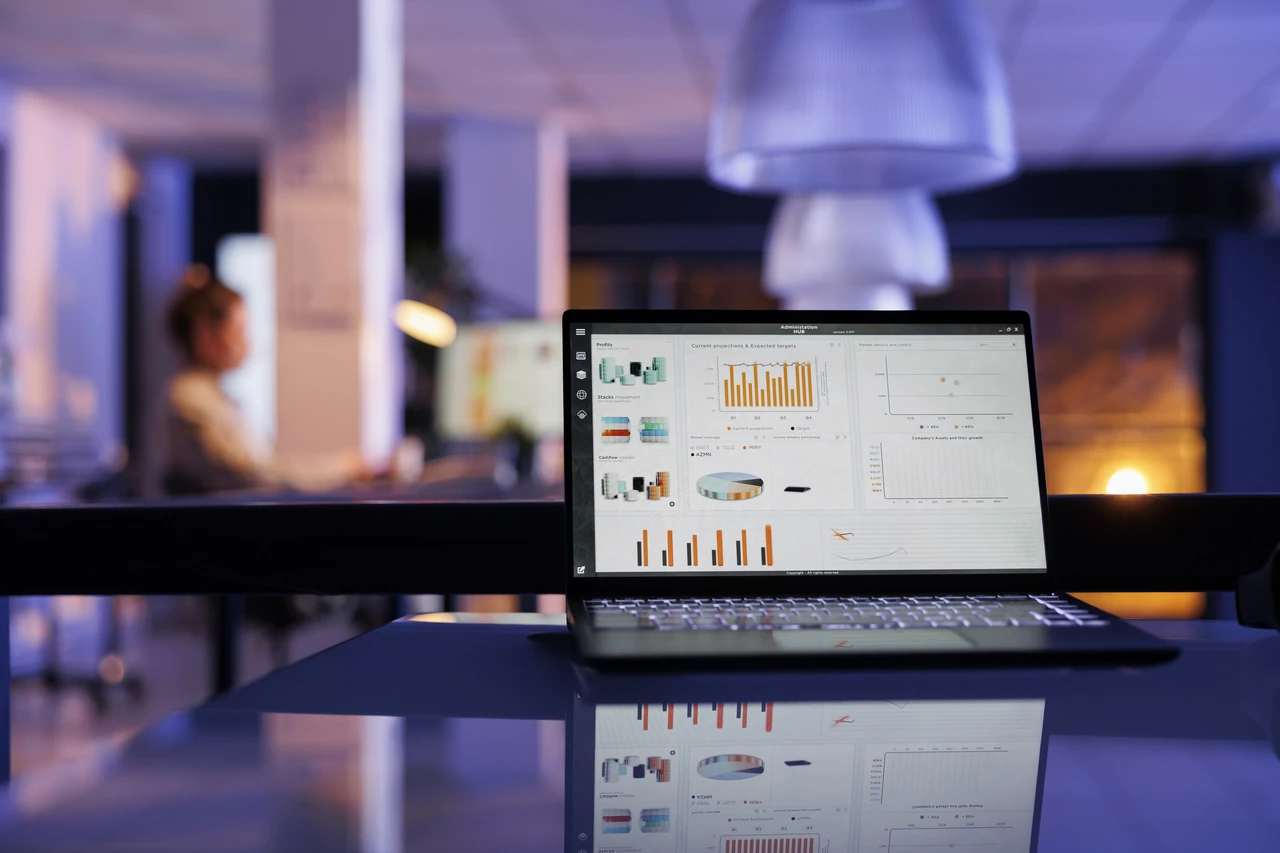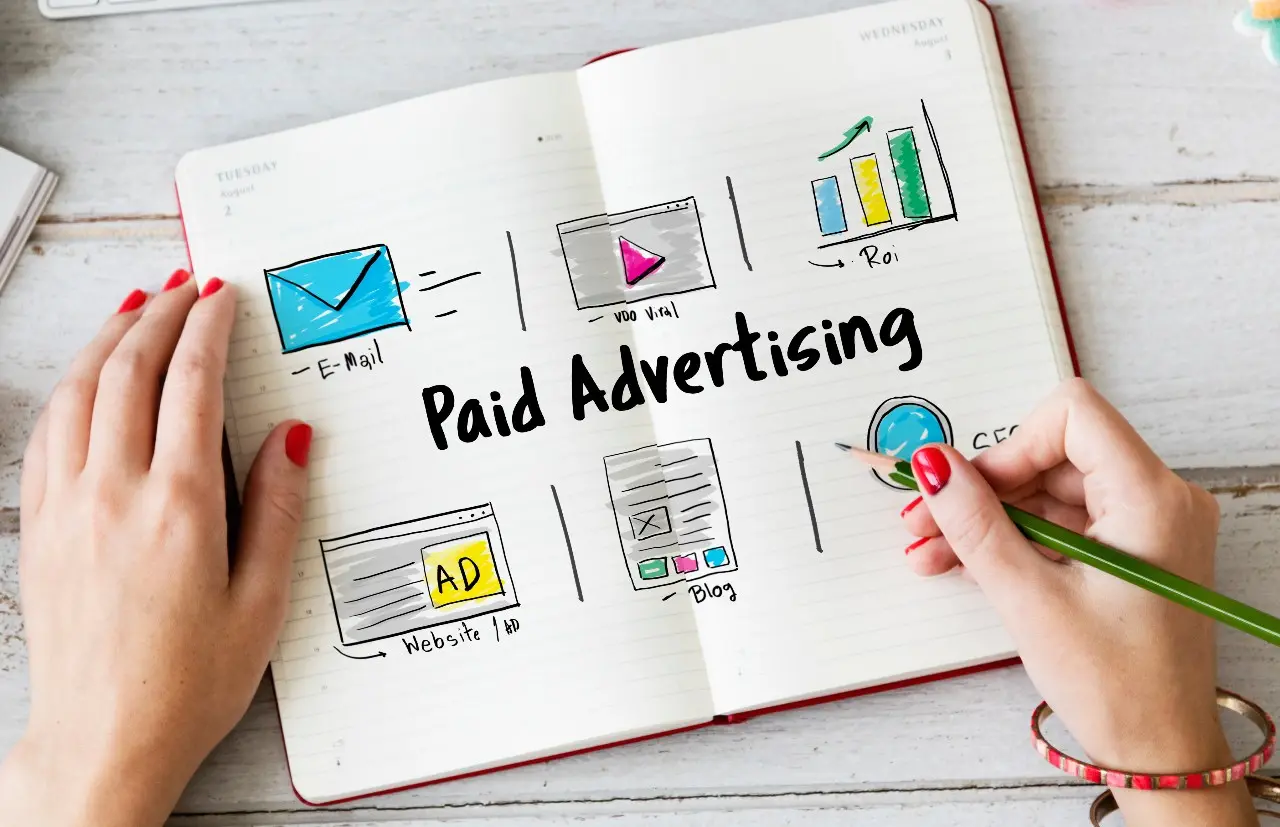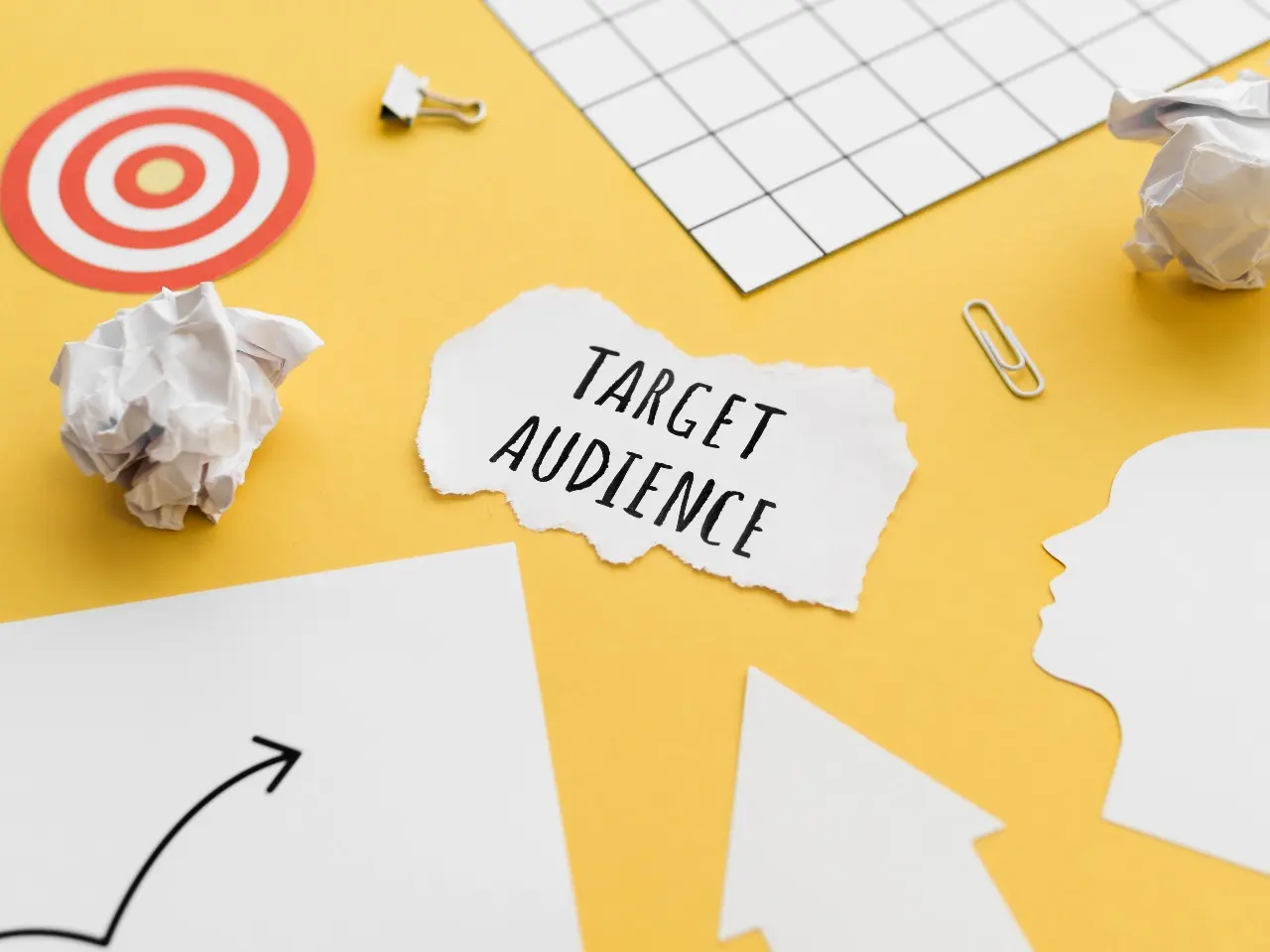Listen to article
In today’s data-driven landscape, businesses are constantly evaluating the effectiveness of their marketing strategies. With so many options available, one question frequently asked is: “Is display advertising still worth it?”.
While some might argue that social platforms and search engine algorithms have overshadowed it, display advertising continues to be a relevant and impactful tool for brands looking to boost visibility and drive conversions.
But how effective is it really? What kind of ROI can you expect?
In this article, we’ll delve into the latest statistics surrounding display ad performance and explore how this advertising method can still deliver tangible value. We’ll analyze key metrics across diverse industries and platforms, providing you with actionable insights for your campaigns.
Why PPC Advertising Remains a Cornerstone of Digital Marketing
In the competitive landscape of digital marketing, PPC advertising continues to prove its worth as a go-to strategy for businesses of all sizes. From driving immediate traffic to providing measurable results, PPC offers a level of control and scalability that few other marketing channels can match. But beyond the metrics, these investments often translate into higher brand satisfaction, making PPC a cornerstone for marketers aiming to achieve impactful outcomes. Here’s a deeper dive into some standout statistics showcasing PPC’s market presence and effectiveness:
- Nearly seven million advertisers actively leverage PPC campaigns, collectively spending over $10.1 billion on this channel. Source
- An impressive 84.84% of brands report positive results from PPC efforts, underscoring its credibility as a highly satisfying marketing tactic. Source
- Approximately 65% of small-to-midsize businesses (SMBs) allocate budget to PPC campaigns, reflecting its popularity as a core digital strategy. Source
The Takeaway: PPC Advertising Thrives on Strategy
The numbers speak for themselves—PPC advertising remains a trusted and highly utilized marketing avenue, with a remarkable satisfaction rate and widespread adoption across businesses of all sizes. However, its true value lies in its ability to be fine-tuned for optimal performance. Success doesn’t come from simply setting up a campaign; it stems from continuous testing, refining, and adapting strategies to align with your audience’s behavior. For SMBs, in particular, PPC can level the playing field by driving meaningful results even on tighter budgets when executed thoughtfully.
Pro Tip: Don’t settle for “set it and forget it” campaigns. Take full advantage of the multitude of targeting and analytics tools offered by PPC platforms like Google Ads. Analyze metrics like click-through rates (CTR), cost per click (CPC), and conversion rates regularly. Then, use that data to adjust ad copy, keywords, and bidding strategies to keep your campaigns profitable and results-focused.
How Display Ads Drive Search Behavior and Purchasing Decisions
Display advertising has evolved far beyond static banners—it’s now a sophisticated tool that not only grabs attention but actively shapes consumer behavior. The ability of display ads to spark curiosity, encourage deeper interaction, and influence purchasing decisions makes them an essential component of any modern marketing strategy. For businesses aiming to stay competitive, understanding the real impact of these touchpoints is critical to fine-tuning campaigns and optimizing ROI.
- Consumers exposed to display ads are 155% more likely to search for brand-related terms, highlighting how these ads amplify brand recognition and interest. Source
- Clicking on display ads doubles the likelihood of a customer purchasing from a website compared to visitors from organic search results. Source
Takeaway: The Ripple Effect of Display Ads
The influence of display advertising extends far beyond the initial click. From boosting brand-related searches to doubling purchase likelihood, these ads serve as vital catalysts in a customer’s journey. However, success doesn’t happen by chance—it requires strategizing ad placements, choosing compelling creatives, and delivering tailored messages that resonate with your audience.
Pro Tip:
To amplify your display ad impact, focus on retargeting strategies that re-engage users who’ve shown prior interest in your brand. Pair personalized visuals with clear call-to-actions to create memorable, results-driven campaigns that encourage repeated interaction and loyalty.
Evaluating ROI and Key Metrics in Display Advertising
When it comes to allocating your marketing budget, understanding the performance metrics of display ads is crucial for making informed decisions. Display advertising, while often debated, has consistently shown measurable potential for driving engagement and ROI when executed strategically. With the right approach, it can serve as a valuable tool to amplify your brand’s reach and generate meaningful results across platforms. Here are some key statistics to benchmark your campaigns and better assess their impact:
- Businesses can potentially earn $2 for every $1 spent on PPC campaigns. Source
- Google Ads can generate an average of $8 in revenue for every $1.60 spent. Source
- The average click-through rate (CTR) for ads appearing on the first page of Google search results is 3.16%. Source
- The average CPC for Facebook ads is $1.86, while Google Ads average $2.69. Source
- Integrated marketing campaigns that include display advertising can see an average of 50% higher ROI. Source
- Almost half of marketers (47%) are not tracking the ROI of their content marketing efforts. Source
These figures underscore the tremendous potential of display ads when paired with robust tracking and optimization efforts. While the cost-per-click and CTRs may vary across platforms, integrated campaigns demonstrate the power of combining multiple touchpoints to drive a higher return on investment. Despite this, nearly half of marketers are still missing out on the opportunity to fully understand and act on their campaign data—a gap that savvy advertisers can leverage to sharpen their competitive edge.
Pro Tip:
Leverage A/B testing to refine your campaigns, testing elements like ad creatives, headlines, and CTAs to see what resonates most with your target audience. Use analytics tools such as Google Analytics or Facebook Ads Manager to assess not just clicks, but also downstream metrics like conversions and customer lifetime value to get a true sense of your campaign’s ROI. By treating display advertising as an iterative process rather than a one-off effort, you’ll increase your chances of sustained success.
How Display Advertising Boosts Purchase Intent
When done strategically, display advertising isn’t just about increasing visibility—it’s a potent tool for influencing purchase behavior. Unlike organic traffic, which often brings in users still exploring their options, visitors from paid display ads are typically further along the buyer’s journey. This makes them more likely to take immediate action, provided your campaigns are targeted and relevant.
- Visitors from PPC ads are reportedly 50% more likely to make a purchase compared to organic visitors. Source
These statistics highlight the impact of well-crafted display ads in converting curious browsers into paying customers. As digital markets get noisier, businesses that design data-driven ad strategies can stand out and reap higher returns on their investments.
Use heatmap tools and analytics to track user interactions on your landing pages. This data helps refine your layouts and messaging, ensuring that visitors from your display ads don’t just click—but convert.
Understanding Display Ad Success: Mobile vs. Desktop
When it comes to display advertising, one size doesn’t fit all—especially when comparing mobile and desktop performance. Each platform has distinct user behaviors, strengths, and weaknesses, which means advertisers must adopt tailored strategies to get optimal results. With mobile traffic dominating the digital landscape but desktops leading in user engagement and conversions, striking the right balance is critical for maximizing ROI. Here’s what the data reveals:
- Mobile devices have the highest bounce rate globally, at 52.11%, compared to desktop and tablet. Source
- Desktop users spend approximately 40% more time on websites than mobile users. Source
- Desktops lead in conversions with a rate of 3.7%, while mobile lags behind at 2.2%. Source
These insights emphasize that while mobile drives sheer volume, desktop delivers quality engagement and conversions. For marketers, this means the key to success lies in creating platform-specific campaigns that align with each audience’s browsing intent. Use data-driven insights to allocate your budget wisely—prioritize desktop for high-conversion campaigns like retargeting, while using mobile for brand awareness and top-of-funnel efforts. Pair this with responsive designs and device-optimized creatives to ensure your ads perform seamlessly across all screens.
Social Media and Mobile: The Powerhouses of Display Ad Growth
As digital consumption habits shift, social media and mobile platforms have become indispensable for advertisers aiming to reach audiences where they spend most of their time. The dominance of these platforms isn’t just a passing trend—it’s a reflection of how consumers interact with content today. To stay competitive, understanding the investment trends in these areas is essential for optimizing ad strategies and ensuring long-term success.
- Global ad spend on social media is projected to reach $220 billion in 2024. Source
- Social media advertising accounts for approximately 28.8% of all advertising expenditures. Source
- In 2022, mobile marketing spend reached $327 billion and is projected to hit $400 billion by 2024. Source
- U.S. marketers allocate 19% of their advertising budgets to mobile advertising. Source
- A majority of marketers, 69%, are investing in video ads as part of their marketing campaigns. Source
Marketers who fail to adapt to the ever-expanding dominance of social media and mobile risk missing significant opportunities to connect with their audiences. With ad spend on these platforms skyrocketing, it’s clear that they’ve become cornerstones for modern digital strategies. Diversifying your campaigns across key channels, like mobile video ads or platform-specific social media formats, can provide the edge needed in today’s crowded marketplace.
Ensure your ads are designed with platform behavior in mind—short, engaging video content for platforms like TikTok, while polished creatives for Instagram can help you capture attention faster. On mobile, prioritize speed and functionality, keeping load times fast and designs responsive to create a seamless user experience.
How Social Media Shapes Display Ad Effectiveness
Social media isn’t just a hub for connection—it’s a dynamic playground for advertisers looking to capture attention in a noisy digital space. With billions of daily users, platforms like TikTok, Instagram, and Facebook provide unparalleled access to diverse audiences. But not all platforms drive the same level of engagement, making it crucial for brands to adapt their strategies to the unique behaviors of each platform’s user base. The numbers reveal some surprising insights into where display advertising thrives in the social sphere:
- The average user spends 145 minutes per day on social media, providing a significant window for ad exposure. Source
- 38% of TikTok users are open to advertisements—nearly 10 times higher than the mere 4% of general internet users. Source
Takeaway: Platform-Specific Strategies Drive Success
Social media has redefined the role of display ads, but one-size-fits-all tactics won’t cut it. TikTok’s standout receptiveness to ads demonstrates that understanding platform-specific user behaviors is essential for crafting highly engaging campaigns. By aligning ad formats, messaging, and creative elements with how users interact on each platform, brands can create experiences that feel less intrusive and more relevant.
Use data-driven insights to refine your ad approach for each platform. For example, TikTok thrives on short, visually engaging content, while platforms like LinkedIn favor professional, value-driven messaging. Experiment with A/B testing to identify what resonates best with your audience on different platforms.
AI and First-Party Data: The New Power Duo in Display Advertising
With the surge in digital advertising competition, standing out requires more than clever creative—it demands precision and relevance. That’s where AI and first-party data come into play. By seamlessly combining cutting-edge machine learning with proprietary customer insights, advertisers can now target audiences with unprecedented accuracy, delivering campaigns that truly resonate. More than just buzzwords, these tools are reshaping the way marketers strategize, allowing them to focus on quality leads and measurable success.
- Google Ads utilizes AI to revolutionize campaign management with initiatives like Performance Max campaigns, which use keywordless AI to uncover high-intent queries and deliver personalized ads tailored to user intent. It also empowers marketers to rapidly create and scale creative assets. Source
- Microsoft Advertising leverages generative AI innovations, such as Conversational Ad experiences, Ads for Chat API, and Copilot, ushering in new opportunities for dynamic audience interactions. Source
- First-party data significantly improves lead quality. For example, Google’s enhanced conversions feature taps into first-party data to refine bidding strategies and serve as an audience signal in Performance Max campaigns, ensuring ads connect with the right users. Source
Takeaway: Combining Human Strategy with AI Precision
AI and first-party data aren’t just tools—they’re essential ingredients for success in today’s hyper-competitive advertising landscape. While AI streamlines processes like bid optimization and creative generation, first-party data ensures that your campaigns remain hyper-relevant to your audience. Together, they enable marketers to pivot from broad, one-size-fits-all strategies toward data-driven, personalized campaigns that yield higher engagement and ROI.
To make the most of these advancements, invest in tools and processes that allow you to harness first-party data effectively—think robust CRMs and customer segmentation tools. Pair this with AI-driven platforms to automate and scale personalization, ensuring your ads deliver results without sacrificing efficiency.
For businesses aiming to take their digital advertising strategies a step further, integrating these tools with a broader marketing plan is essential. Leveraging full-service marketing solutions can help ensure your campaigns are cohesive, data-driven, and optimized across all channels, maximizing your reach and ROI.
How Automation Elevates Display Advertising Effectiveness
In a competitive digital advertising landscape, automation has emerged as a game-changer, enabling businesses to streamline processes and deliver targeted, impactful campaigns. Beyond simplifying workflows, automation transforms how brands interact with their audiences, creating opportunities for deeper personalization and boosting campaign performance. When integrated with display ad strategies, automation is not just a trend—it’s fast becoming an essential ingredient for success.
- Email automation drives results, generating 20% more leads compared to non-automated campaigns. Source
- 79% of businesses consider automation a cornerstone of their customer experience strategy, emphasizing its role in creating smoother, more personalized interactions. Source
- Marketing automation proves its value, with 65% of marketers confirming successful outcomes through its use. Source
Automation’s ability to optimize repetitive tasks while delivering personalized experiences paves the way for more effective display ad campaigns. From nurturing leads to fostering loyalty, businesses that embrace automation can create seamless journeys that resonate with their target audience.
Pro Tip:
Take your automation efforts to the next level by using dynamic content in your display ads. Incorporate user data (such as browsing behavior or purchase history) to deliver hyper-relevant, personalized messages that increase engagement and conversions.
Unlocking Consumer Engagement: The Influence of Ads on Purchase Decisions
In a world where consumers are constantly bombarded with information, the ability of online ads to guide purchase behavior is nothing short of remarkable. Display advertising and search engine ads don’t just increase visibility—they place your brand directly in front of consumers at the exact moment they’re ready to buy. Understanding these trends is crucial for marketers aiming to maximize ROI and craft campaigns that truly resonate. Below are some key statistics reflecting the power of display ads in driving online purchases:
- 64% of consumers click on a Google ad when they are actively looking to buy items online, proving search engine ads’ ability to convert high-intent shoppers. Source
- 65% of high-purchase-intent searches result in an ad click, highlighting how display ads capture attention during critical decision-making moments. Source
- PPC visitors are 50% more likely to convert than organic visitors, showcasing the efficiency of paid ads in delivering results. Source
- Ads in search results account for 45% of all page clicks, emphasizing their role as a dominant traffic driver. Source
- The top three PPC ads receive 46% of total clicks, making placement a crucial factor in ad strategy. Source
Takeaway: Align Strategy with Consumer Intent
These statistics reaffirm that well-placed, strategically crafted ads act as a direct line to consumers actively seeking solutions. To stay competitive, businesses must align their ad strategies with consumer intent, focusing on ad quality, targeting, and timing. Whether it’s crafting compelling copy that speaks to customer needs or leveraging data to secure premium ad placements, the key lies in precision.
Use A/B testing to fine-tune your ad performance. Experiment with headlines, calls to action, and visual elements to identify what resonates most with your audience. Tools like Google Ads’ keyword insights and heatmaps can help you uncover high-performing tactics and sharpen your approach for maximum impact.
The Amplified Power of Content Marketing and Display Ads
Pairing content marketing with display advertising is like blending two high-performing strategies into a powerhouse approach. Content marketing builds the foundation for brand trust, visibility, and engagement, while display ads amplify reach and reinforce messaging. When combined, these tactics don’t just coexist—they supercharge one another. Here’s how content marketing significantly boosts display ad performance through enhanced visibility, lead generation, and audience engagement:
- Businesses that publish at least 16 articles per month generate leads 4.5 times faster, showcasing how consistent content creation accelerates customer acquisition. Source
- Companies with blogs experience 55% more organic search traffic, proving that quality content is a magnet for potential customers. Source
- 70% of marketers say blog articles deliver the highest ROI during the early stages of lead generation—an essential insight for aligning ads with potential buyers’ needs. Source
- Blogs incorporating video marketing receive three times more inbound links compared to text-only content, demonstrating that multimedia blogs enhance SEO while boosting visibility and authority. Source
These findings reflect a critical reality: strong content marketing isn’t just a support act for display advertising—it’s the co-star. By creating consistent, high-value content, businesses can increase organic traffic, nurture leads with precision, and amplify ad campaigns through improved brand visibility and audience engagement.
Pro Tip:
Don’t keep your content and display ad strategies running in silos. Sync them for maximum impact. For example, use blog-driven insights to inform your display ad copy or funnel ad traffic to high-performing blog posts. This cohesive approach ensures your marketing touchpoints work together to guide prospects down the path to conversion.
For businesses looking to leverage this dynamic duo, a well-rounded digital strategy is key. Integrating complementary tactics, such as digital marketing strategies for small businesses, can empower companies to expand their reach and maximize ROI from both display ads and content marketing.
Unpacking Industry and Regional CPC Trends in Display Advertising
The performance and cost-effectiveness of display advertising are directly influenced by the industry and geographic market you’re targeting. For advertisers, understanding the nuances of cost-per-click (CPC) trends is critical to stretching ad budgets without compromising on ROI. From industries like legal and online education commanding premium CPC rates to sectors like travel and electronics benefiting from lower averages, the disparities reveal strategic opportunities for marketers to explore.
- The travel and hospitality sector enjoys the lowest average CPC on Google’s Display Network, at just $0.44. Source
- Dating and personals ads face the highest average CPC on Google’s Display Network, at $1.49. Source
- As of May 2023, the online education sector saw the highest average monthly CPC on the Google Display Network at $9.95, while the electronics sector had the lowest, at $0.68. Source
- The legal industry holds the highest average CPC on Google Ads, reaching $9.21. Source
- The real estate and arts & entertainment industries record the lowest average CPC for search ads on Google, at $1.55. Source
- In May 2023, U.S. advertisers in the legal services sector faced the highest average monthly CPC at $6.83, while in France, this figure was a mere $0.34. Source
The data underscores how factors like industry competition, customer lifetime value, and geographic purchasing behaviors shape CPC rates, offering critical insights for advertisers when tailoring their campaigns.
Don’t just rely on averages—dig deeper into your niche and location-specific benchmarks. Combining this granular knowledge with strategic bidding tools, such as Google’s Smart Bidding, can help uncover hidden ROI opportunities in less competitive markets while ensuring you allocate resources effectively where CPC rates are higher.
Conclusion
Display advertising continues to be a cornerstone of digital marketing, offering businesses the ability to enhance brand visibility, drive engagement, and capture high-intent audiences. From the undeniable ROI potential to the evolving impact of mobile and social media platforms, the data highlights why display ad performance remains a key driver of marketing success. However, success in this space is not guaranteed—it requires precision, adaptability, and a firm grasp of the latest trends, such as leveraging AI, first-party data, and automation.
As industries and regions present varied CPC benchmarks, it’s clear that there’s no one-size-fits-all approach to display advertising. Customizing your strategies for specific platforms, audience behaviors, and performance metrics is crucial to maximize your ROI. Whether you’re exploring social media opportunities, optimizing for mobile and desktop, or harnessing the power of content marketing, the goal is clear: create campaigns that resonate.
If you’re ready to supercharge your business, don’t hesitate to get in touch with our full-service marketing pros for a free quote. Let’s work together to drive tangible results and make your display advertising efforts count.
About Creating Display Ad Performance: Is It Still Worth the Investment?
This guide was written by the Scopic Studios team and reviewed by Araksya Hakobjanyan, SEO Lead at Scopic Studios.
Scopic Studios delivers exceptional and engaging content rooted in our expertise across marketing and creative services. Our team of talented writers and digital experts excel in transforming intricate concepts into captivating narratives tailored for diverse industries. We’re passionate about crafting content that not only resonates but also drives value across all digital platforms.
Note: This blog’s images are sourced from Freepik.


